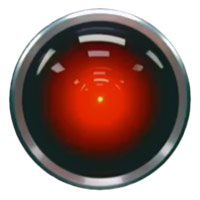Human error

A human error is an error that often describes a problem caused by a human end-user and not computer software or hardware. PEBKAC (Problem Exists Between Keyboard and Chair) is an acronym describing an issue stemming from human error.
In the 1968 movie 2001: A Space Odyssey, the artificially intelligent HAL 9000 famously says, "It can only be attributable to human error." when asked about a fault in the device to communicate with Earth.
Examples of how humans cause errors
- Clicking "Ok" or "Next" without reading.
- Changing a setting without understanding what's being changed or the implications.
- Not reading the instructions or manual.
- Not typing a command correctly.
- Mistakenly clicking the wrong button.
- Falling for a dark pattern designed to trick the user.
Performing an undo can fix a human error such as mistakenly deleting text.
How to avoid human errors
Most human errors caused by the end-user are avoided by slowing down, reading, and never assuming. Whenever you receive a prompt for confirmation while using a computer, be sure you understand what's happening. If you don't, you can cancel the prompt by pressing Esc or closing the window.
A lot of malware and crapware gets installed on a computer because the developer knows most computer users are in a hurry and don't read everything they should.
Human programmer errors
The end-user doesn't cause all human errors. Because humans also create the hardware and software that a computer uses, it's also possible that the developer or programmer made mistakes. Updates are usually released to fix them.
If a program is confusing and causes human errors not part of the code, the developer may also release updates to prevent mistakes and confusion.
